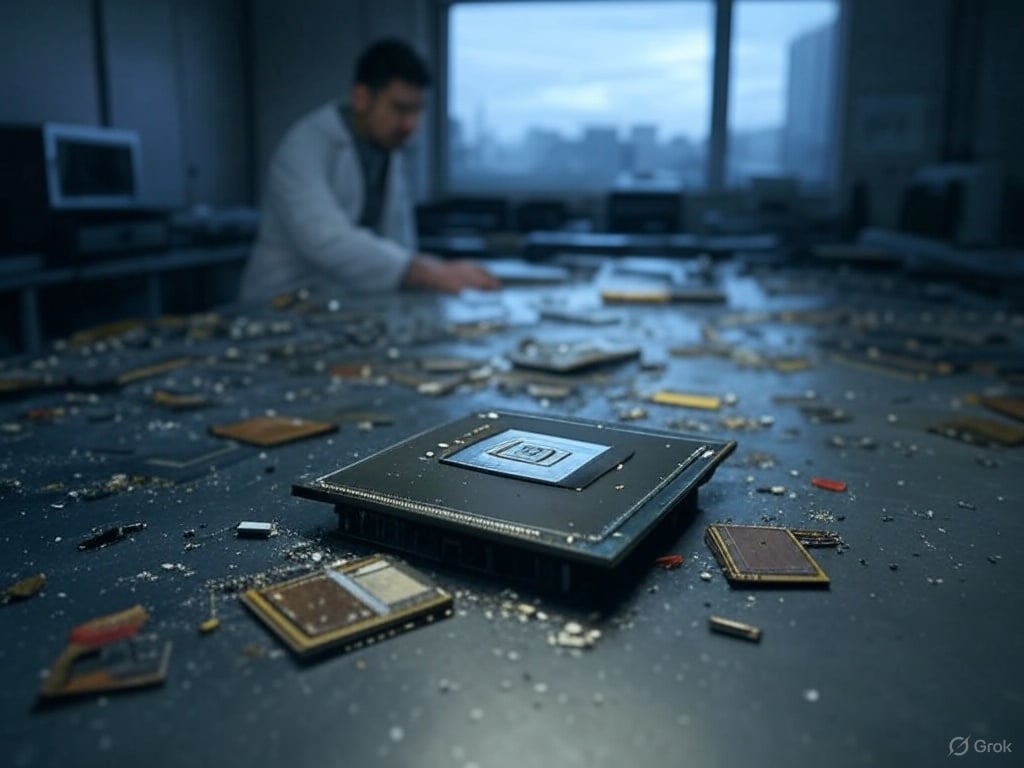U.S. Restrictions on H20 Chips Hinder Development of One of Asia’s Most Promising AI Projects
The advancement of DeepSeek’s new R2 model, one of the emerging players in China’s artificial intelligence ecosystem, has been interrupted by a shortage of NVIDIA H20 processors, according to The Information. The company, which gained notoriety with the launch of its R1 model, has yet to confirm when its successor, the R2, will be ready.
According to sources close to the project, DeepSeek has been working diligently on the development of the R2, although its CEO, Liang Wenfeng, is not yet satisfied with its performance. The company is continuing to optimize the model internally before authorizing its final deployment.
A Model Powered by 50,000 NVIDIA GPUs
The R1 model was trained using a colossal cluster of 50,000 Hopper GPUs, which included 30,000 H20 units, 10,000 H800, and another 10,000 H100. These resources were provided by investor High-Flyer Capital Management. R1 was quickly adopted by startups, large corporations, and entities connected to the Chinese government, with most running it specifically on H20 chips.
However, the restrictions imposed by the U.S. government since April 2025 on the export of H20 processors have started to cause concrete problems: they not only limit the use of R1 but also complicate the preparation of the necessary environment for deploying R2 at scale.
The Achilles’ Heel of Chinese AI: Dependence on U.S. Hardware
Despite being a limited version of the powerful H100 chip, the H20 had become a popular option among Chinese companies due to its compatibility with NVIDIA’s CUDA ecosystem. DeepSeek, like many other firms in the sector, has optimized its software to work with this architecture, which now reveals itself as a vulnerability amid the fluctuations of international politics.
NVIDIA had managed to sell billions of dollars’ worth of H20 chips each quarter to Chinese companies before the restrictions, demonstrating the extent to which AI in the country still depends on U.S. hardware, despite attempts to foster an independent domestic industry.
Meanwhile, Chinese cloud computing platforms have warned that if the R2 model surpasses the current open-source models in performance, its demand could quickly exceed the available processing capacity in the country.
Cross Accusations and Growing Tensions
This scenario is compounded by rising tensions with Western companies: according to some reports, OpenAI has accused DeepSeek of using proprietary models during the development of R1, although the Chinese company has not publicly responded to these claims.
DeepSeek had boasted of having created R1 using fewer resources than giants like OpenAI, but the case clearly illustrates that even the most advanced players in Chinese AI still operate under a delicate technological balance, vulnerable to foreign political and commercial decisions.
In summary, the blockade on NVIDIA GPUs not only slows DeepSeek’s progress but also serves as a reminder of the structural dependence that still exists in the global tech sector, even among those leading the forefront of artificial intelligence.
Via: The Information

